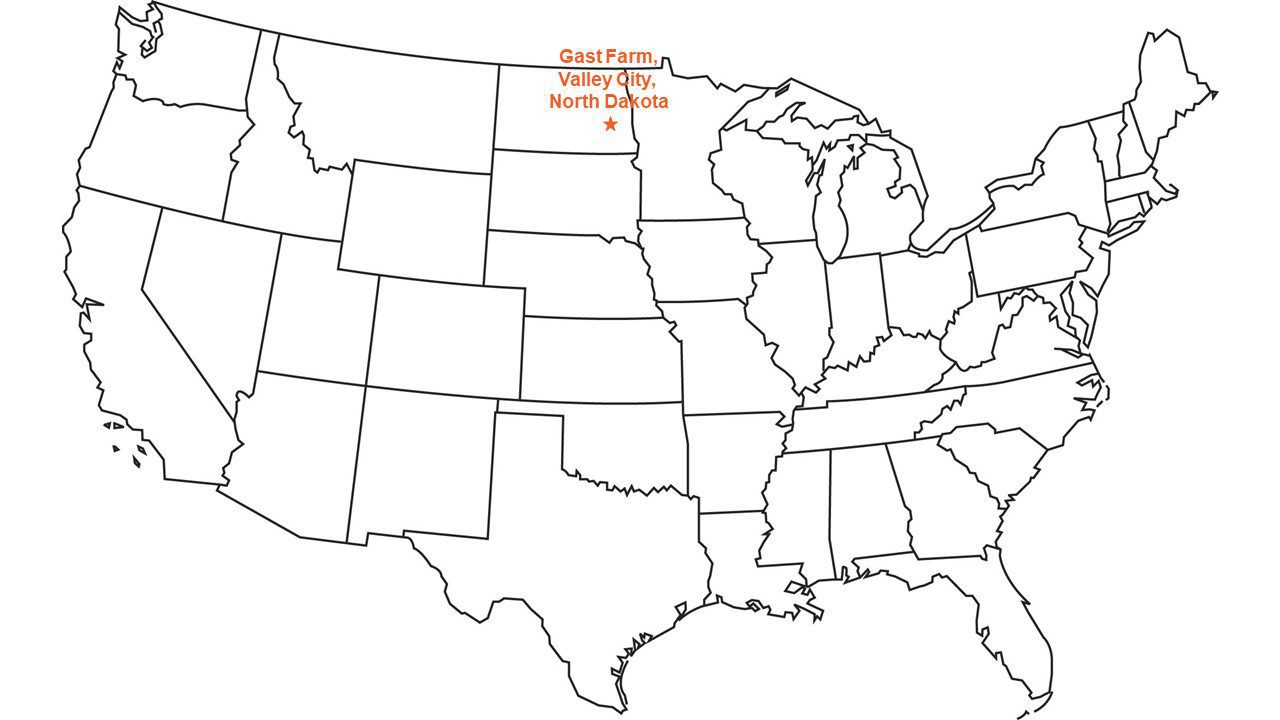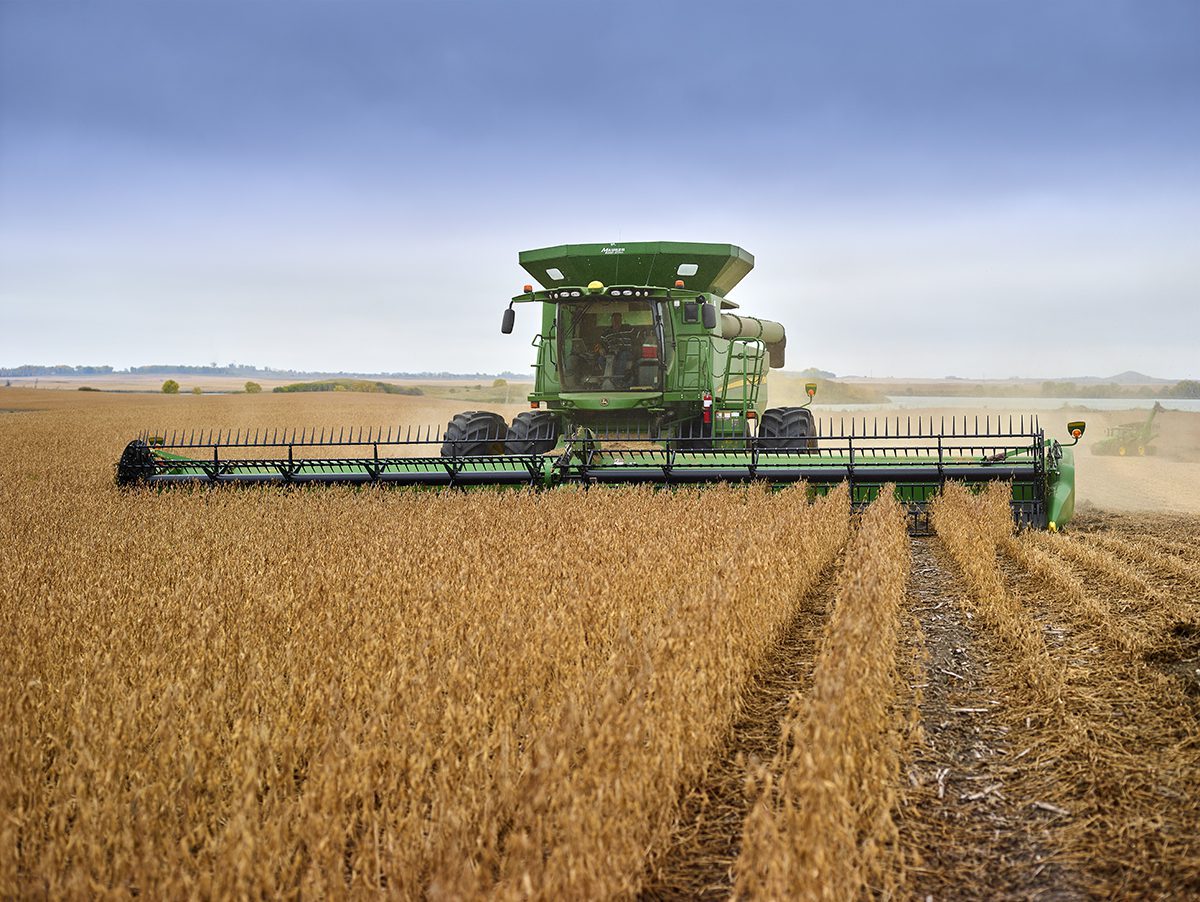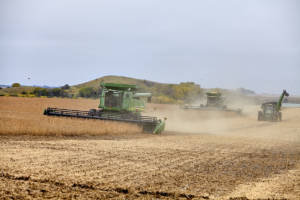 Planting early and a hot, dry summer combined to allow us to start harvesting soybeans about 15 to 20 days earlier than normal. Those same conditions may have us harvesting corn nearly a month ahead of average.
Planting early and a hot, dry summer combined to allow us to start harvesting soybeans about 15 to 20 days earlier than normal. Those same conditions may have us harvesting corn nearly a month ahead of average.
The early harvest timing compressed our time to prepare, so during late August and early September we were busy getting spring and summer equipment like planters and sprayers fixed and put away for the winter. We got harvest equipment ready, including combines, grain carts, semitrucks, our elevator and our grain drying system. And, we did a bit of work on the edges of some fields to widen the approach for equipment moving in and out of the fields.
Thankfully, we received some slow, soaking rains during the last two weeks of August while we were getting ready for harvest. Much of North Dakota, in the northern plains of the U.S., received at least some rain. In our area, about 12.7 cm, or 5 inches, of rain fell, helping to replenish much-needed soil moisture. The timing of the rain was too late to make a difference for our earliest soybeans, but it did help many of our later fields fill pods better.
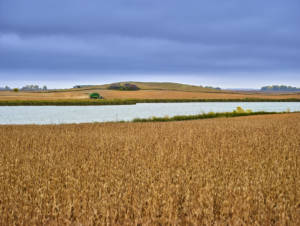
Soybean harvest started with just one combine cutting a few of our driest fields. The soybean moisture averaged 13%, which is perfect for harvest and storage. By mid-September, harvest was moving at full speed.
For our farm, that means a team of 12 to 14 people working 12 to 13 hours a day to run five combines, two grain carts and several semitrucks. We start once the dew dries off each morning, and we work until the soybean plants start holding moisture again in the evening. Together, we can harvest between 320 and 365 hectares, or 800 and 900 acres, each day. It will take us about 2.5 weeks to harvest all our soybeans. We hope to finish soybeans by the end of September, and we expect average yields.
Those soybeans move from the field directly to local elevators, where they are loaded on shuttle trains and carried to the Pacific Northwest region of the U.S. for export, primarily to Asia. Nearly 100% of North Dakota soybeans have been exported every year, but that will change soon, when the first crushing plant in our state comes online, possibly as early as 2022. I attended the official introduction of the plant site earlier this year. The new crushing plant will be close enough to some of our fields that we will likely deliver some soybeans to that plant in the future. It will produce both food and fuel. The plant will focus on producing biodiesel because the demand for renewable diesel is increasing in the U.S. At the same time, it will produce soybean meal, providing cost-efficient protein for livestock feed.
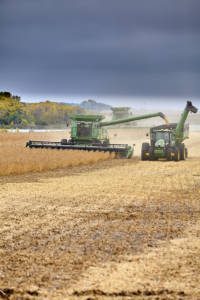 Our corn is maturing quickly, as well, and like soybeans, we expect average yields. We may divert one combine to start harvesting corn during the third week of September. After soybeans are done, we will focus on corn. Our grain drying system dictates the speed of corn harvest. We will run two very large combines, along with grain carts and semitrucks. We will work 15 to 16 hours a day, weather and breakdowns permitting, and try to harvest about 160 hectares, or around 400 acres, each day. But corn harvest usually takes about a month. We store more of the corn so that it can be delivered to area ethanol plants throughout the year.
Our corn is maturing quickly, as well, and like soybeans, we expect average yields. We may divert one combine to start harvesting corn during the third week of September. After soybeans are done, we will focus on corn. Our grain drying system dictates the speed of corn harvest. We will run two very large combines, along with grain carts and semitrucks. We will work 15 to 16 hours a day, weather and breakdowns permitting, and try to harvest about 160 hectares, or around 400 acres, each day. But corn harvest usually takes about a month. We store more of the corn so that it can be delivered to area ethanol plants throughout the year.
Much of our region of the northern U.S. plains suffered from drought this season, and crop yields in the most-effected states may be below average. But in our immediate area, we were fortunate not to suffer quite as badly, and our average yields will contribute to the reliable supply of soy produced in the U.S. Our soils held moisture from previous wet years, and a few timely rains helped our crops reach average yields.
This field update is funded by the soybean checkoff. To share or republish part or all of this Ground Work 2021 update, please link to the original article and credit www.USSOY.org.
